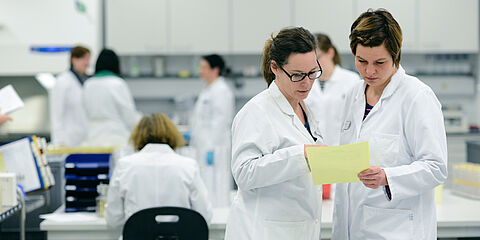Recent changes to maximum levels of nickel in food
For the first time, the European Union has set maximum levels for nickel in a wide range of foods. These measures aim to improve food safety and quality and reduce consumer exposure to nickel.
We will provide you with the key details of the new regulations.
Introducing maximum nickel content

From 1 July 2025, new maximum levels for nickel will apply to a wide range of foods, including nuts, vegetables, seaweed, certain oilseeds (sunflower seeds, peanuts, soybeans), cereals and pseudo-cereals, chocolate, cocoa powder, baby food and fruit and vegetable juices.
These regulations are part of the final draft of an amendment to the European Contaminants Regulation (EU) 2023/915, which has already been adopted.
Importance and occurrence of nickel
Nickel is a widely distributed element in the earth's crust and is found in food both from natural sources and as an artificial result of industrial processing. In 2015, the European Food Safety Authority (EFSA) published an assessment of the health risks posed by nickel in food and drinking water. Regular oral intake, for example through contaminated food, was observed to have a reprotoxic effect as well as possible developmental disorders in infants and children. In sensitive individuals, short-term exposure to nickel can aggravate skin rashes and allergic reactions. New data from 2020 confirms these findings. Sensitised individuals, around 15% of the population, are at risk of acute skin reactions.
The EFSA has derived a tolerable daily intake (TDI) of 13 µg per kilogram of body weight, which is often exceeded, particularly by infants and children. A specific maximum level of 12 mg/kg has been set for lupins.
Monitoring and data collection
A comprehensive monitoring programme for nickel in food is planned from 2025 to 2027. This initiative is supported by the Monitoring Recommendation (EU) 2024/907. The aim is to improve the data base for nickel content in various food products. The product groups monitored include food supplements, chocolate, nut spreads, cocoa beans, cereal products, soups, coffee, tea, vegetables, seaweed, oilseeds, soya products, nuts, fish and seafood.
BfR results

In its BfR-MEAL study, the Federal Institute for Risk Assessment (BfR) found that pulses, nuts, oilseeds, coffee, cocoa and tea have the highest nickel content, with peak values of up to 11.1 mg/kg in cocoa powder and 5.4 mg/kg in cashew nuts. The consumption of cereal products contributes significantly to the daily intake of nickel, especially in children.
Implementation and transition period
The new nickel limits will enter into force 20 days after their publication in the Official Journal of the European Union and will apply from 1 July 2025. Products lawfully placed on the market before this date may continue to be sold to ensure a smooth transition.
To give producers more time to adapt, the introduction of maximum levels for cereals and pseudo-cereals has been postponed until 1 July 2026.
These measures aim to minimise consumer exposure to nickel and improve food safety in the EU. Producers are required to comply with and implement the new rules.
Nickel Metal Investigation - How we can help you
Due to our efficient and thorough proceeding, WESSLING experts analyse raw materials and products using multiple or individual methods. We offer a comprehensive service from sampling and analysis to the expert evaluation of the results. If residues or contaminants are found in your food sample, we will be happy to assist you with our many years of experience in finding possible causes.
Your contact person to our food analysis experts
- Christina Witt
- +49 2505 89-633
- food@wessling.de

„If you have any questions about our nickel metal testing and are interested in our analyses, please feel free to contact me.“



